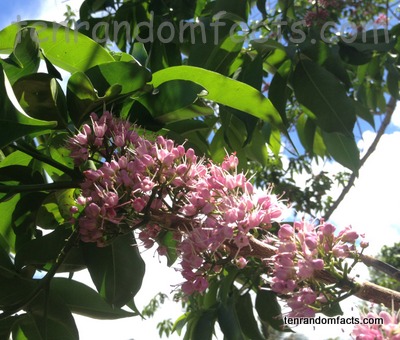Evodia provides the double whammy – both the wood and the flowers.
- An evodia is an evergreen flowering tree that can grow to a medium size, and is native to Australia and New Guinea.
- ‘Evodia’ is also known as ‘pink flowered doughwood’, ‘eudia’, ‘doughwood’ and ‘corkwood’.
- The scientific name of evodias is Melicope elleryana and it is from the family Rutaceae, the family of citrus.
- Evodias reach heights of around five to six metres (16 to 20 feet) when cultivated and up to 25 metres (82 feet) in the wild.
- The small tubular flowers of evodias grow in clusters along the branches of the tree, and are of a pink colour with long stamens.
- Evodias bloom throughout the warmer months of December to March, and the flowers are very attractive to birds, especially lorikeets, as well as butterflies, for the nectar they produce.
- Evodias are found in forest habitats particularly in rainforest areas, and they are often home to Ulysses butterfly larvae.
- The trunk of evodias tends to have a layer of cork-like bark; and the trees can be used as a source of timber, and they are often grown for ornamental purposes.
- Australian-German Ferdinand von Mueller, a botanist, was the first to scientifically classify evodias and initially named the tree Euodia elleryana in 1865.
- After flowering, small fruits of an ovoid shape develop, that change from green to a black, brown or grey colour when ripe, that then split open to each release a small, black shiny seed, that birds also like to feed on.





